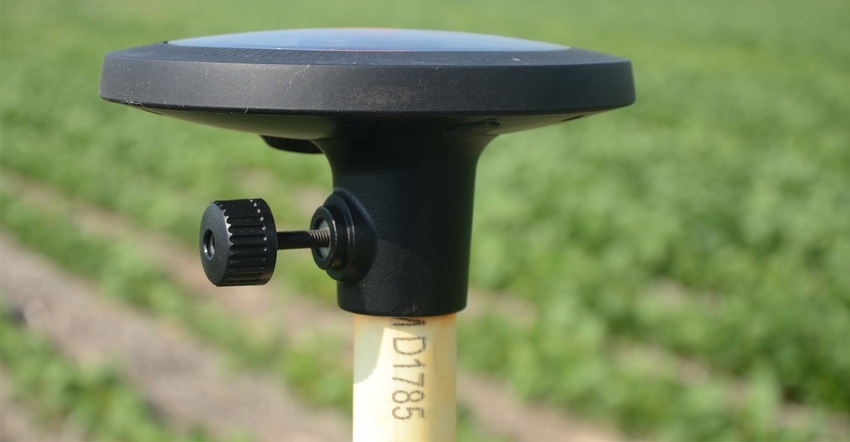November 6, 2019

By Shawna Richter-Ryerson
A new grant that brings together researchers from the University of Nebraska, the University of Illinois and Princeton University aims to bridge the gap between data collection, modeling and decision-making, so crop producers can more easily decide whether to irrigate.
The project, funded by a $900,000 grant from USDA's National Institute of Food and Agriculture program, could potentially help growers save both financial and water resources.
The project includes three parts, the third in which Nebraska will serve as ground zero. Trenton Franz, hydrogeophysicist; Derek Heeren, associate professor and irrigation engineer; and Daran Rudnick, assistant professor and irrigation management specialist, all from the University of Nebraska-Lincoln, will work with partners and producers in the state to validate remotely collected soil moisture and weather data and to inform the design of an end product useful to producers' decision-making.
Kaiyu Guan, remote-sensing specialist with the University of Illinois, is leading the project, with Franz and Ming Pan, associate research hydrologist at Princeton University, acting as institutional leads.
"We have remote-sensing, modeling and in-field data, but we want to know how best to combine and use that data to make improved decisions about irrigation," says Franz, an associate professor in the UNL School of Natural Resources (SNR). "Right now, the main problem is we don't have great real-time irrigation data to help validate the remote-sensing and modeling data to make it useful for decision-making."
Weather, soil and irrigation data collected via unmanned aerial vehicles, airplanes or satellites have certain problems: inopportune cloud cover, time between Earth passes, the scale — hundreds or meters across rather than at the tens of meters needed — all of which hinder the ability to make an informed decision.
Farmers have their own set of barriers. As farms progressively get bigger — in some cases 50 to 60 miles across — it becomes impossible to check the entire farm for rainfall simultaneously. Factor in that it takes three to four days for a center-pivot irrigation system to complete a cycle around the field, and the end result is farmers making decisions based on a five-day period of time with inaccurate or missing information.
"We've all driven by someone's lawn or farm field and it's raining, and we ask, 'Why not just turn off the sprinkler or center pivot when it's raining?'" Franz says. "The actual decision [for a farmer] is not very simple. The bottom line is if you turn off your sprinkler, and it didn't rain and it's the wrong time of year, that's going to cost you a lot of money." The crop won't get enough moisture and yield will drop, resulting in lower income.
Farmers want to conserve water, he adds, but unless a sound decision can be made quickly, they'll make the safe decision and water the field.
The researchers will spend the next three years working to refine satellite-collected data, so it can be incorporated into mathematical modeling to accurately represent daily weather and crop and irrigation information, and then validate those components through field-level monitoring.
The UNL team, members of SNR and the Biological Systems Engineering Department will work with Nebraska stakeholders to install on-the-ground crop sensors measuring 40 variables, including rainfall, solar radiation and plant health. Those variables combined will provide a water and energy budget — the information the farmer needs to make a decision — and the researchers hope to develop that information into an app or other easily accessible product.
"Once we disseminate that out through our networks, we hope to make it better with feedback from users and with more localized data," Franz says, "because the project leaders can look at the app, but if it's just us, it's not useful."
The Nature Conservancy, the Nebraska Water Balance Alliance, Nebraska Natural Resources Districts, and Nebraska Extension will partner on the project, with additional partners working with the University of Illinois and Princeton University on data analysis and modeling methods.
The National Science Foundation, together with USDA-NIFA, is funding the research through the cyberphysical systems program.
Richter-Ryerson is a communications associate in UNL's School of Natural Resources.
Source: UNL CropWatch, which is solely responsible for the information provided and is wholly owned by the source. Informa Business Media and all its subsidiaries are not responsible for any of the content contained in this information asset.
You May Also Like




